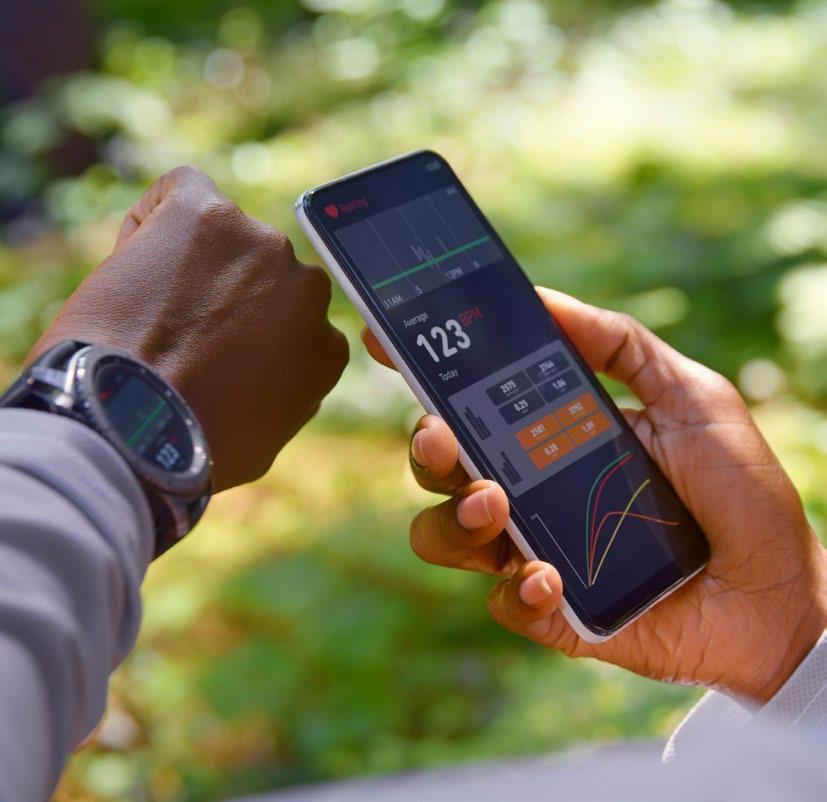
2 minute read
Is Your Digital Health Product or Service Subject to FDA Regulations?
The convergence of wearable technology and artificial intelligence systems are generating a new wave of products that raise novel regulatory, business, and intellectual property considerations. If you are developing a digital health or software product, it may contain software functions that are considered “devices”, as that term is defined in section 201(h) of the Federal Food, Drug, and Cosmetic (FD&C) Act and are subject to US. Food and Drug Administration (FDA) oversight as devices.
The Digital Health Policy Navigator Tool
Advertisement
To assist in this evaluation process, the FDA has developed a useful tool, the Digital Health Policy Navigator, which can help guide companies through the evaluation process to determine whether new products or services they may be offering in the digital health space are subject to FDA regulations for devices. While this navigation tool should not be used in place of FDA counsel to make a determination of whether a product or service is covered, it can be helpful for companies that are evaluating new offerings to help illuminate which portions of FDA regulations are likely to be applicable (or whether none are applicable). The preliminary feedback this navigation tool provides can then be further reviewed with FDA counsel.
AUTHORS
Nathan Beaver | nbeaver@foley.com
Stephen Maebius | smaebius@foley.com
The navigation tool includes seven questions:
STEP 1
Is the software function intended for a medical purpose?
STEP 2
Is the software function intended for administrative support of a health care facility?
STEP 3
Is the software function intended for maintaining or encouraging a healthy lifestyle?
STEP 4
Is the software function intended to serve as electronic patient records?
STEP 5
Is the software function intended for transferring, storing, converting formats, or displaying data and results?
STEP 6
Is the software function intended to provide clinical decision support?
STEP 7
Does the Device Software Functions and Mobile Medical Applications Guidance apply?

Based on the answers to these seven questions, the navigation tool will then display one of the following outcomes:
Outcome
LlKELY NOT A DEVICE
LIKELY FDA INTENDS TO EXERCISE ENFORCEMENT DISCRETION
Meaning
Device requirements do not apply if the software function is not a device.
Some software functions may meet the definition of a device, but because they pose a lower risk, the software function may fall within FDA’s enforcement discretion policy (meaning that the FDA does not intend to enforce applicable requirements under the FD&C Act at this time).
Impact
While the navigation tool has its limitations, it identifies and raises key questions stemming from a number of digital health guidances, including General Wellness: Policy for Low Risk Devices; Medical Device Data Systems, Medical Image Storage Devices, and Medical Image Communications Devices; Clinical Decision Support Software; and the Policy for Device Software Functions and Mobile Medical Applications. The tool shows that the FDA is also trying to “innovate” in the area and provide new resources for companies navigating this space.
LIKELY THE FOCUS OF FDA’S REGULATORY OVERSIGHT
The software function is a device and its functionality could pose a risk to a patient’s safety if the device were to not function as intended. Devices may be subject to requirements such as premarket authorization (e.g., premarket notification (section 510(k) of the FD&C Act), De Novo (section 513(f) (3) of the FD&C Act), premarket approval (section 515 of the FD&C Act)), adverse event reporting (section 519 of the FD&C Act), among others.
Your product may be a device. Go to Step#.
More information is needed to identify the relevant policies. Go to the next Step.
Understanding the regulatory pathway can also provide opportunities for coordinating patent exclusivity and regulatory exclusivity. For example, some digital health products may be eligible to receive data exclusivity from the FDA, and if they are paired with a traditional therapeutic, then certain kinds of patents may also be listable in the FDA’s Orange Book. An integrated approach with combined input from regulatory and IP counsel can be helpful to leverage all available types of protection.










